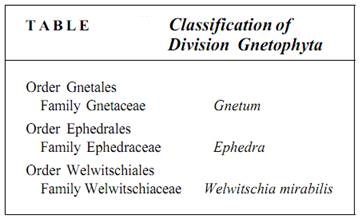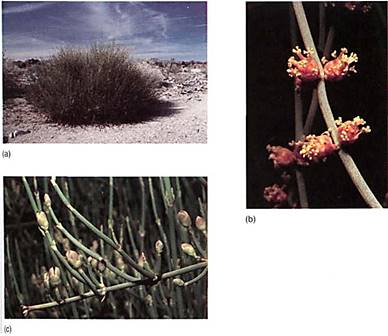

النبات

مواضيع عامة في علم النبات

الجذور - السيقان - الأوراق

النباتات الوعائية واللاوعائية

البذور (مغطاة البذور - عاريات البذور)

الطحالب

النباتات الطبية


الحيوان

مواضيع عامة في علم الحيوان

علم التشريح

التنوع الإحيائي

البايلوجيا الخلوية


الأحياء المجهرية

البكتيريا

الفطريات

الطفيليات

الفايروسات


علم الأمراض

الاورام

الامراض الوراثية

الامراض المناعية

الامراض المدارية

اضطرابات الدورة الدموية

مواضيع عامة في علم الامراض

الحشرات


التقانة الإحيائية

مواضيع عامة في التقانة الإحيائية


التقنية الحيوية المكروبية

التقنية الحيوية والميكروبات

الفعاليات الحيوية

وراثة الاحياء المجهرية

تصنيف الاحياء المجهرية

الاحياء المجهرية في الطبيعة

أيض الاجهاد

التقنية الحيوية والبيئة

التقنية الحيوية والطب

التقنية الحيوية والزراعة

التقنية الحيوية والصناعة

التقنية الحيوية والطاقة

البحار والطحالب الصغيرة

عزل البروتين

هندسة الجينات


التقنية الحياتية النانوية

مفاهيم التقنية الحيوية النانوية

التراكيب النانوية والمجاهر المستخدمة في رؤيتها

تصنيع وتخليق المواد النانوية

تطبيقات التقنية النانوية والحيوية النانوية

الرقائق والمتحسسات الحيوية

المصفوفات المجهرية وحاسوب الدنا

اللقاحات

البيئة والتلوث


علم الأجنة

اعضاء التكاثر وتشكل الاعراس

الاخصاب

التشطر

العصيبة وتشكل الجسيدات

تشكل اللواحق الجنينية

تكون المعيدة وظهور الطبقات الجنينية

مقدمة لعلم الاجنة


الأحياء الجزيئي

مواضيع عامة في الاحياء الجزيئي


علم وظائف الأعضاء


الغدد

مواضيع عامة في الغدد

الغدد الصم و هرموناتها

الجسم تحت السريري

الغدة النخامية

الغدة الكظرية

الغدة التناسلية

الغدة الدرقية والجار الدرقية

الغدة البنكرياسية

الغدة الصنوبرية

مواضيع عامة في علم وظائف الاعضاء

الخلية الحيوانية

الجهاز العصبي

أعضاء الحس

الجهاز العضلي

السوائل الجسمية

الجهاز الدوري والليمف

الجهاز التنفسي

الجهاز الهضمي

الجهاز البولي


المضادات الميكروبية

مواضيع عامة في المضادات الميكروبية

مضادات البكتيريا

مضادات الفطريات

مضادات الطفيليات

مضادات الفايروسات

علم الخلية

الوراثة

الأحياء العامة

المناعة

التحليلات المرضية

الكيمياء الحيوية

مواضيع متنوعة أخرى

الانزيمات
Division Gnetophyta
المؤلف:
AN INTRODUCTION TO PLANT BIOLOGY-1998
المصدر:
JAMES D. MAUSETH
الجزء والصفحة:
27-11-2016
2452
Division Gnetophyta
Division Gnetophyta contains three groups of enigmatic plants, each of which is often placed in its own order: Gnetum with 30 species (order Gnetales; Fig. 1), Ephedra with about 40 species (order Ephedrales; Fig. 2), and Welwitschia mirabilis, the only species in order Welwitschiales (Fig. 3; Table ).


FIGURE 1:Gnetum. (a) Plants of Gnetum strongly resemble dicots, having broad leaves and woody stems. (G. Davidse) (b) Ovules are not borne in cones.

FIGURE 2:Ephedra. (a) Plants of Ephedra often occur in dry areas and strongly resemble many types of desert-adapted dicots. Although their reproductive structures are gymnospermous, the microsporangiate cone (b) could be mistaken for a staminate imperfect flower. The naked ovules reveal that they are not angiosperms (c).

FIGURE 3:Welwitschia mirabilis. (a) Whole plant with torn leaves. (William E. Ferguson) (b) Microsporangiate strobili. (c) Megasporangiate strobilus. (Richard Shiell/Earth Scenes)
Gnetums are mostly vines or small shrubs with broad leaves similar to those of dicots. They are native to southeast Asia, tropical Africa, and the Amazon Basin. Plants of Ephedra are tough shrubs and bushes that inhabit desert regions in northern Mexico and southwestern United States. Their leaves are reduced and scalelike. The few living plants of Welwitschia exist only in deserts of South Africa or in cultivation. They have a short wick stem and only two leaves, but the leaves grow perennially from a basal meristem, becoming increasingly longer.
All three genera are unusual in being gymnosperms with vessels in their wood. This had been thought to show that they might be related to primitive angiosperms. However, their vessel elements evolved from tracheitis with circular bordered pits, whereas those of angiosperms derived from scalariform tracheids. Furthermore, angiosperms are thought to have evolved from vessel-less ancestors, the vessels evolving after flowers, not before them.
Unlike the pollen cones of all other gymnosperms, those of gnetophytes are compound and contain small bracts. Seed cones are also compound and contain extra layers of tissue around the ovules; the tissue is variously interpreted as an extra integument, bract, or sporophyll.
The few fossils of gnetophyte organs or tissues are only several million years old, too recent to be of much help in understanding the evolution and ancestry of the group. The pollen is quite distinctive, being spindle-shaped and having narrow ridges. It is easy to recognize, and fossil pollen of this type occurs as far back as the late Triassic Period, but pollen has not helped reveal their origins either.
 الاكثر قراءة في البذور (مغطاة البذور - عاريات البذور)
الاكثر قراءة في البذور (مغطاة البذور - عاريات البذور)
 اخر الاخبار
اخر الاخبار
اخبار العتبة العباسية المقدسة

الآخبار الصحية















 قسم الشؤون الفكرية يصدر كتاباً يوثق تاريخ السدانة في العتبة العباسية المقدسة
قسم الشؤون الفكرية يصدر كتاباً يوثق تاريخ السدانة في العتبة العباسية المقدسة "المهمة".. إصدار قصصي يوثّق القصص الفائزة في مسابقة فتوى الدفاع المقدسة للقصة القصيرة
"المهمة".. إصدار قصصي يوثّق القصص الفائزة في مسابقة فتوى الدفاع المقدسة للقصة القصيرة (نوافذ).. إصدار أدبي يوثق القصص الفائزة في مسابقة الإمام العسكري (عليه السلام)
(نوافذ).. إصدار أدبي يوثق القصص الفائزة في مسابقة الإمام العسكري (عليه السلام)


















